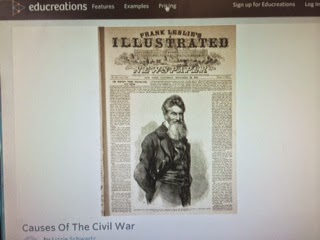This past week in Honors History 10, we forged ahead with the learning, analyzing, and reflecting process that goes into creating our final exam. The basic routine of this was as follows: watch background videos, analyze primary and secondary sources, create 40 exam questions, discuss and formulate an essential question, and answer it in a blog post. To read about this process in more detail, check out my most recent post.
This week, we came up with the question: During westward expansion, did the impact of federal policy towards buffalo soldiers and native Americans match the intent?
Before this unit, when I heard the words “westward expansion,” the image that would immediately pop into my mind was one derived from the “Little House on the Prairie” series. This image was one of Native Americans solemnly riding on horseback, leaving the land that they had grown up on. Because of this image ingrained in my mind, I pitted the white people who forced them to leave as cruel and heartless. I did not consider that the whites may not have realized how wrong or out of control their actions were.
 |
| Native Americans being forced to leave their homes. Image found at: http://www.democraticunderground.com/10022541773. |
After taking a look at the Dawes Act, set into place by MA Senator Henry Dawes in 1887, I realized that the white people in power really didn't have the intention of being so cruel to Native Americans. In an excerpt from this act, it reads that it was, “to extend the protection of the laws of the United States and the Territories over the Indians, and for other purposes.” Although US citizens benefitted from taking the NAs land, this really wasn't the reason that they took it. Instead, white Americans believed that they were doing the NAs a favor by removing them from their land, that by putting them in separate areas they would be able to help reform the NAs and transform them into better people.
Although the intentions of white Americans who pushed for NAs to be removed from their land may not have been bad, the ways in which this removal was carried out certainly were. During the late 1800s, president Andrew Johnson created 6 acts of regiment troops to reinforce military in the Midwest. These troops were comprised of Buffalo Soldiers, black Americans who has recently been members of the union troops and continued on in the US armed forces. These soldiers, who already had to endure terrible conditions, were ordered to destroy anything in sight that was the NAs in an effort to remove them from their lands.
No, the white people in power weren't trying to do any harm by removing NAs from their homes, but in doing so they ended up causing battles, deaths, and hardships for both the NAs and the Buffalo Soldiers.









